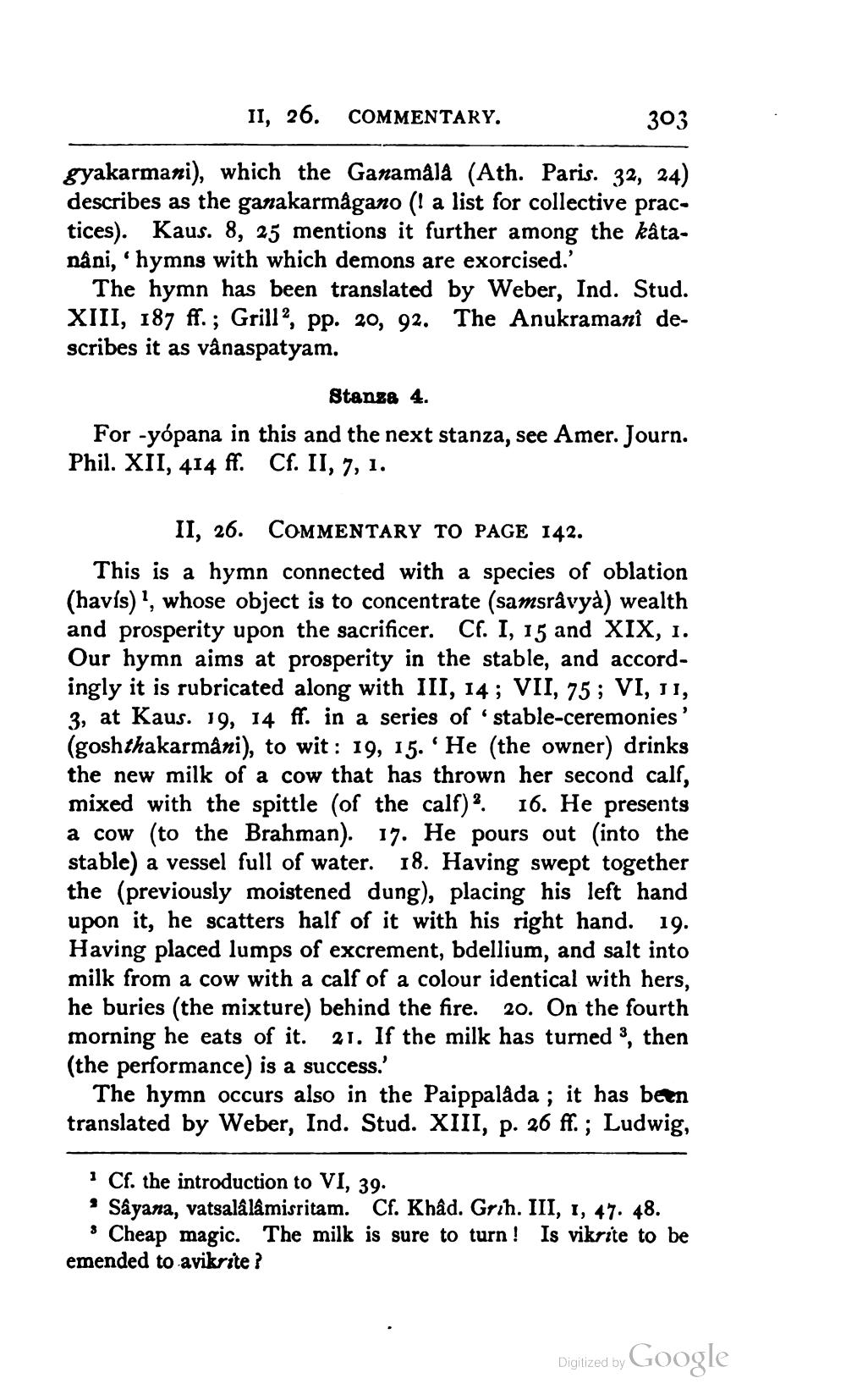________________
II, 26. COMMENTARY.
303
gyakarmani), which the Ganamåla (Ath. Paris. 32, 24) describes as the ganakarmågano (! a list for collective practices). Kaus. 8, 25 mentions it further among the kâtanâni,'hymns with which demons are exorcised.'
The hymn has been translated by Weber, Ind. Stud. XIII, 187 ff.; Grill?, pp. 20, 92. The Anukramani describes it as vanaspatyam.
Stanza 4.
For -yópana in this and the next stanza, see Amer. Journ. Phil. XII, 414 ff. Cf. II, 7, 1.
II, 26. COMMENTARY TO PAGE 142. This is a hymn connected with a species of oblation (havis) !, whose object is to concentrate (samsråvyà) wealth and prosperity upon the sacrificer. Cf. I, 15 and XIX, 1. Our hymn aims at prosperity in the stable, and accordingly it is rubricated along with III, 14 ; VII, 75; VI, 11, 3, at Kaus. 19, 14. ff. in a series of stable-ceremonies' (goshthakarmâni), to wit: 19, 15. 'He (the owner) drinks the new milk of a cow that has thrown her second calf, mixed with the spittle (of the calf)? 16. He presents a cow (to the Brahman). 17. He pours out into the stable) a vessel full of water. 18. Having swept together the (previously moistened dung), placing his left hand upon it, he scatters half of it with his right hand. 19. Having placed lumps of excrement, bdellium, and salt into milk from a cow with a calf of a colour identical with hers, he buries (the mixture) behind the fire. 20. On the fourth morning he eats of it. 21. If the milk has turned 3, then (the performance) is a success.'
The hymn occurs also in the Paippalada ; it has been translated by Weber, Ind. Stud. XIII, p. 26 ff. ; Ludwig,
· Cf. the introduction to VI, 39. • Sâyana, vatsalálâmisritam. Cf. Khâd. Grih. III, 1, 47. 48.
• Cheap magic. The milk is sure to turn! Is vikrite to be emended to avikrite?
Digiized by Google




